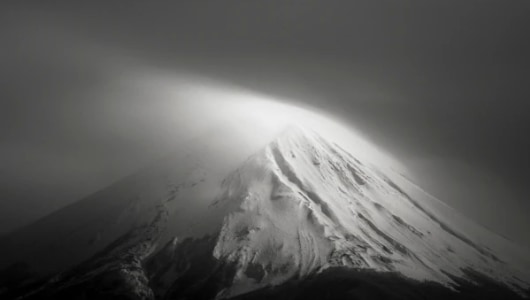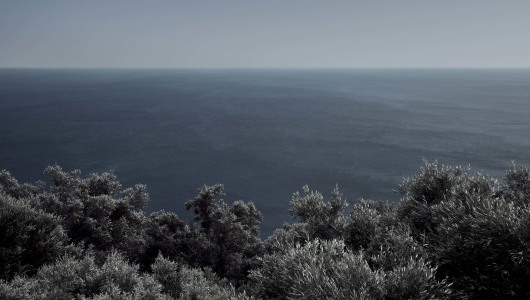Born in Munich in 1936, Thomas Hoepker ranks among the most influential German photojournalists of the late 20th century. As such, he not only witnessed but helped shape what is often referred to as the second golden age of photojournalism, following the 1920s and 1930s. Hoepker has made photographic history not only with his contributions to magazines such as Stern, Geo, Kristall and the Münchner Illustrierte, but also as an art director, writer and filmmaker. Many of his black-and-white photo essays are considered classics of their genre.
In 1964, working as a reporter for Stern, Hoepker had the opportunity to portray boxing legend Muhammad Ali, and continued to photograph Ali at regular intervals over the course of a decade. In 1966, Hoepker and his then-wife, Stern journalist Eva Windmöller, joined the boxing legend in London and Chicago and in 1970, he was present with his camera when Ali, who had been out of the ring for some time, was preparing for the “fight of the century” against Joe Frazier. Hoepker met up with Ali again years later when the latter was already debilitated by Parkinson’s. Many of these images have become iconic and were exhibited in major museums and included in renowned collections around the world.
In 1976, Hoepker moved to New York as a correspondent for Stern and, until 1981, he was director of the American edition of GEO. From 1987 to 1989, he was Art Director of Stern in Hamburg. In 1989, Hoepker became the first German national to be accepted by Magnum as a full member, later serving as its president from 2003 to 2006. Diagnosed with Alzheimer’s in 2017, he set out to fulfill a long-held dream: to travel across the United States one last time, retracing the journey he made in the early 1960s for his renowned "Heartland" project. A film team accompanied him and his wife, filmmaker Christine Kruchen, resulting in “Dear Memories”, a visually powerful and touching documentary about a photographer who has spent a lifetime capturing cultural and historical memories and for whom these images now function as a kind of “outsourced” memory.
Thomas Hoepker passed away peacefully on July 10, 2024, surrounded by his family. Over the past decade, Bildhalle was closely associated with Thomas Hoepker and presented his iconic images in multiple solo exhibitions in Zurich and Amsterdam.
"Thomas Hoepker's pictures are characterized by exuberant liveliness. However, he does not turn a blind eye to the misery of the world and has never succumbed to the temptation of exploiting the horrors of the afflicted locations to which he has been sent. He contradicts the cynical observation that it is often the reporter's good fortune to record the misfortune of others, instead demonstrating in his pictures that the misfortunes of others necessarily apply to everyone. He has never failed to treat his camera as a weapon in the fight for justice.
In the final analysis, it has always been the people with all their worries, quirks and idiosyncrasies, who play the most important role. Hoepker's unusual flair for composition invariably goes hand in hand with a profoundly humanist sensibility."
Freddy Langer
In 1964, working as a reporter for Stern, Hoepker had the opportunity to portray boxing legend Muhammad Ali, and continued to photograph Ali at regular intervals over the course of a decade. In 1966, Hoepker and his then-wife, Stern journalist Eva Windmöller, joined the boxing legend in London and Chicago and in 1970, he was present with his camera when Ali, who had been out of the ring for some time, was preparing for the “fight of the century” against Joe Frazier. Hoepker met up with Ali again years later when the latter was already debilitated by Parkinson’s. Many of these images have become iconic and were exhibited in major museums and included in renowned collections around the world.
In 1976, Hoepker moved to New York as a correspondent for Stern and, until 1981, he was director of the American edition of GEO. From 1987 to 1989, he was Art Director of Stern in Hamburg. In 1989, Hoepker became the first German national to be accepted by Magnum as a full member, later serving as its president from 2003 to 2006. Diagnosed with Alzheimer’s in 2017, he set out to fulfill a long-held dream: to travel across the United States one last time, retracing the journey he made in the early 1960s for his renowned "Heartland" project. A film team accompanied him and his wife, filmmaker Christine Kruchen, resulting in “Dear Memories”, a visually powerful and touching documentary about a photographer who has spent a lifetime capturing cultural and historical memories and for whom these images now function as a kind of “outsourced” memory.
Thomas Hoepker passed away peacefully on July 10, 2024, surrounded by his family. Over the past decade, Bildhalle was closely associated with Thomas Hoepker and presented his iconic images in multiple solo exhibitions in Zurich and Amsterdam.
"Thomas Hoepker's pictures are characterized by exuberant liveliness. However, he does not turn a blind eye to the misery of the world and has never succumbed to the temptation of exploiting the horrors of the afflicted locations to which he has been sent. He contradicts the cynical observation that it is often the reporter's good fortune to record the misfortune of others, instead demonstrating in his pictures that the misfortunes of others necessarily apply to everyone. He has never failed to treat his camera as a weapon in the fight for justice.
In the final analysis, it has always been the people with all their worries, quirks and idiosyncrasies, who play the most important role. Hoepker's unusual flair for composition invariably goes hand in hand with a profoundly humanist sensibility."
Freddy Langer
Artworks
Articles
Media
Highlights
Recommendations
Collections
Shows
Market position
CV
Artworks by Thomas Hoepker
Media
A member and former president of Magnum Photos, Thomas Hoepker has defined German photojournalism like few others. In this video, he discusses his new book "Wanderlust," his travels around the word and some of his most famous photographs.
Thomas Hoepker was honored with the Leica Hall of Fame Award on September 16 at "LEICA - DAS WESENTLICHE" during photokina 2014.
Shows
Market position
Thomas Hoepker studied art history and archeology, then worked as a photographer for Münchner Illustrierte and Kristall between 1960 and 1963, reporting from all over the world. He joined Stern magazine as a photo-reporter in 1964.
Magnum began to distribute Hoepker‘s archive photographs in 1964. He worked as a cameraman and producer of documentary films for German television in 1972, and from 1974 collaborated with his wife, the journalist Eva Windmoeller, first in East Germany and then in New York, where they moved to work as correspondents for Stern in 1976. From 1978 to 1981 Hoepker was director of photography for the American edition of Geo.
Hoepker worked as art director for Stern in Hamburg between 1987 and 1989, when he became a full member of Magnum. Specializing in reportage and stylish color features, he received the prestigious Kulturpreis of the Deutsche Gesellschaft für Photographie in 1968. Among many other awards for his work, he received one in 1999 from the German Ministry of Foreign Aid for Death in a Cornfield, a TV film on Guatemala. Today, Hoepker lives in New York. He shoots and produces TV documentaries together with his second wife Christine Kruchen.
He was president of Magnum Photos from 2003 to 2006. A retrospective exhibition, showing 230 images from fifty years of work, toured Germany and other parts of Europe in 2007.
Magnum began to distribute Hoepker‘s archive photographs in 1964. He worked as a cameraman and producer of documentary films for German television in 1972, and from 1974 collaborated with his wife, the journalist Eva Windmoeller, first in East Germany and then in New York, where they moved to work as correspondents for Stern in 1976. From 1978 to 1981 Hoepker was director of photography for the American edition of Geo.
Hoepker worked as art director for Stern in Hamburg between 1987 and 1989, when he became a full member of Magnum. Specializing in reportage and stylish color features, he received the prestigious Kulturpreis of the Deutsche Gesellschaft für Photographie in 1968. Among many other awards for his work, he received one in 1999 from the German Ministry of Foreign Aid for Death in a Cornfield, a TV film on Guatemala. Today, Hoepker lives in New York. He shoots and produces TV documentaries together with his second wife Christine Kruchen.
He was president of Magnum Photos from 2003 to 2006. A retrospective exhibition, showing 230 images from fifty years of work, toured Germany and other parts of Europe in 2007.
CV
EXHIBITIONS (SELECTION)
2022 - Dear memories, solo exhibition, Bildhalle (CH)
2022 - The way it was, solo exhibition, Bildhalle (NL)
2022 - Ocean, group exhibition, Bildhalle (NL)
2021 - Masterworks, CAMERA WORK (DE)
2020 - Something to make you smile!, group exhibition, Atlas Gallery (UK)
2018 - How does BLUE make you feel?, group exhibition, Arte Fundamental (USA)
2017 - Ali The Greatest, Atlas Gallery (UK)
2015 - Muhammad Ali, the fearless, solo exhibition, Galeria de Babel (BR)
AWARDS (SELECTION)
2014 - Leica Hall of Fame
1976 - World Press Photo Award for Art and Entertainment
1967 - Word Press Photo Award for General News
2022 - Dear memories, solo exhibition, Bildhalle (CH)
2022 - The way it was, solo exhibition, Bildhalle (NL)
2022 - Ocean, group exhibition, Bildhalle (NL)
2021 - Masterworks, CAMERA WORK (DE)
2020 - Something to make you smile!, group exhibition, Atlas Gallery (UK)
2018 - How does BLUE make you feel?, group exhibition, Arte Fundamental (USA)
2017 - Ali The Greatest, Atlas Gallery (UK)
2015 - Muhammad Ali, the fearless, solo exhibition, Galeria de Babel (BR)
AWARDS (SELECTION)
2014 - Leica Hall of Fame
1976 - World Press Photo Award for Art and Entertainment
1967 - Word Press Photo Award for General News
Free Magazine Subscription
Articles, interviews, shows & events. Delivered to your mailbox weekly.











